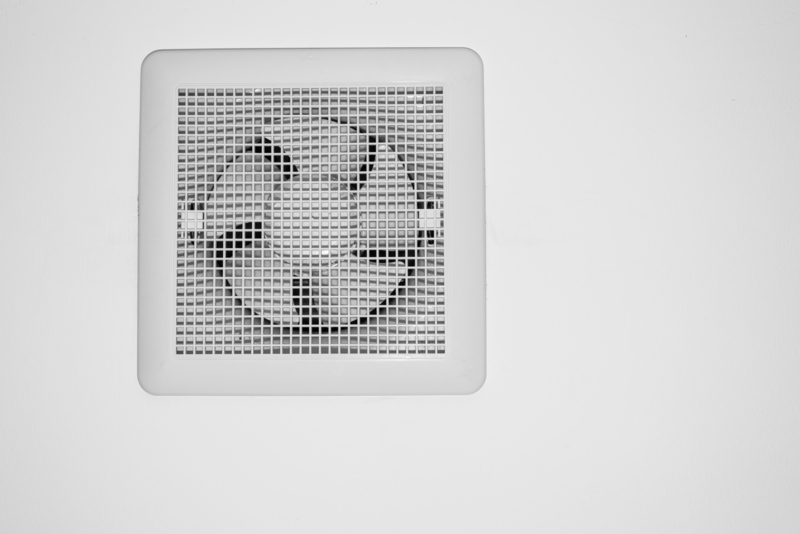Effective Strategies to Keep Mold Out of Your Bathroom
Posted on 23/06/2025
Effective Strategies to Keep Mold Out of Your Bathroom
Bathrooms are notorious for being prime breeding grounds for mold. The constant moisture, warmth, and limited airflow create the ideal environment for mold spores to settle and flourish. If you've discovered persistent black spots or musty odors, it's time to adopt powerful approaches to prevent bathroom mold. In this comprehensive guide, we'll explore the most effective strategies to ensure your bathroom remains clean, fresh, and mold-free.

Why Mold Grows in Bathrooms
Before diving into prevention techniques, it's important to understand why bathrooms are susceptible to mold. Mold spores naturally exist both indoors and outdoors, but they require moisture and organic material to grow. In bathrooms, steam from showers, water spills, and condensation supply ample moisture, while dust, soap scum, and even grout provide food sources.
Main Causes of Mold in Bathrooms
- Insufficient ventilation
- Constant humidity and standing water
- Poor cleaning routines
- Leaky plumbing or fixtures
- Lack of natural light
The Dangers of Mold in the Bathroom
Mold isn't just unsightly. It can trigger allergies, continue to spread rapidly, and even damage the structural integrity of your home. If left unchecked, bathroom mold can:
- Aggravate asthma and respiratory issues
- Cause unpleasant odors
- Stain grout, tiles, and ceilings
- Lead to expensive repairs
How to Prevent Mold Growth in Your Bathroom
The most effective way to tackle mold is through proactive prevention. Let's take an in-depth look at strategies you can deploy to keep mold at bay.
1. Enhance Bathroom Ventilation
Good airflow is your first line of defense. Mold thrives in stagnant, humid air. Focus on keeping the room well-ventilated by:
- Installing an exhaust fan: Make sure it is vented to the outside and use it every time you bathe or shower for at least 20 minutes afterward.
- Opening windows: If your bathroom has windows, open them regularly. Even a slight breeze helps dry surfaces quickly.
- Leaving the door ajar: This encourages air circulation, especially after using hot water.
Tip:
Wipe condensation off mirrors, windows, and walls after showers to reduce lingering moisture.
2. Control Humidity Levels
Consistently high humidity is a major contributor to mold. To keep mold out of your bathroom, aim for relative humidity levels below 50%.
- Use a dehumidifier: Small, portable dehumidifiers are effective in windowless bathrooms.
- Check humidity with a hygrometer: These affordable devices keep you aware of moisture levels.
- Monitor for signs of excess moisture: Water stains, peeling paint, or warping surfaces often indicate high humidity.
3. Fix Leaks and Drips Promptly
Even tiny leaks provide a continuous water supply for mold to thrive. Inspect your bathroom regularly for:
- Leaky faucets or showerheads
- Toilet base seepage
- Loose washing machine hoses (if applicable)
- Gaps or cracks around tubs and sinks
Fix any issues immediately to stop moisture from accumulating in hidden areas where it's hard to spot mold growth.
4. Clean and Maintain Grout, Caulk, and Surfaces
Grout lines, tile joints, and caulked edges are common places for mold spores to nest. Take these steps to prevent mold on bathroom tiles and grout:
- Scrub tiles and grout weekly: Use a stiff brush and a mold-killing cleaner, such as a mixture of vinegar and water or a store-bought antimicrobial spray.
- Replace damaged caulk or grout: Peeling or cracked material traps moisture, offering mold an ideal spot to grow.
- Seal grout annually: Grout sealers create a waterproof barrier against water intrusion and stains.
DIY Cleaning Solution:
- Mix equal parts white vinegar and water in a spray bottle.
- Spray liberally on affected surfaces, let sit for 10 minutes, then scrub and rinse.
For stubborn mold stains, try a baking soda paste or hydrogen peroxide.
5. Dry All Wet Surfaces After Use
The simplest way to keep mold out of your bathroom is to dry all surfaces after each use. Use a squeegee or towel to quickly wipe down:
- Shower walls and doors
- Bathtubs
- Sinks and counters
- Floors, especially near the shower or tub
Be sure to also air out shower curtains and liners to prevent mold from forming at the bottom.
6. Opt for Mold-Resistant Products
When renovating or refreshing your bathroom, choose materials designed to resist mold:
- Use mildew-resistant paint: These create a protective barrier against moisture and make walls easier to clean.
- Select nonporous shower doors or glass panels: They dry faster and don't absorb water like fabric curtains.
- Install mold-resistant drywall: Particularly in high-risk zones.
- Choose silicone caulk over latex: Silicone is more resistant to water and mold growth.
_Upgrading your materials can make a significant long-term difference in combating persistent mold problems._
7. Keep Clutter to a Minimum
A clutter-free bathroom not only looks better but also reduces surfaces for mold to hide and ensures better air circulation.
- Store toiletries, sponges, and loofahs outside the shower after use.
- Avoid stacking towels or leaving washcloths damp.
- Use open shelving or minimal baskets that don't trap moisture.
8. Promote Natural Light
Mold thrives in dark, moist environments. _Sunlight is a natural mold deterrent._ If possible, let the sunshine in by:
- Opening window blinds or curtains during the day.
- Opting for frosted windows to maintain privacy without blocking light.
Routine Maintenance: Your Mold Prevention Calendar
Maintaining a mold-free bathroom is an ongoing process. Here's a sample action plan you can follow:
- Daily: Wipe down wet surfaces. Run exhaust fan or window after each shower.
- Weekly: Scrub and disinfect sinks, tubs, and tiles.
- Monthly: Inspect for leaks, clean exhaust fan cover, and check grout/caulk condition.
- Annually: Reseal grout. Inspect and replace worn caulking.
Dealing with Existing Bathroom Mold
If you already spot patches of mold, prompt action is essential:
- Wear gloves and a mask while cleaning to avoid breathing in spores.
- Scrub affected areas with an antimicrobial cleaner, vinegar, or a bleach solution.
- Replace any permanent stains or crumbling materials (like drywall or caulk) that cannot be salvaged.
*Note: For mold covering large areas (over 10 square feet), it's safest to consult a professional remediation service.*
Common Myths About Mold in the Bathroom
- Myth: Bleach is the only solution for mold.
Fact: While bleach removes visible stains, it may not kill all mold roots on porous surfaces. Use EPA-recommended mold cleaners and physical scrubbing for best results. - Myth: If you can't see mold, it's not there.
Fact: Mold often grows behind walls, under floors, and inside ventilation systems where it isn't immediately visible. - Myth: Mold only grows in old houses.
Fact: Any bathroom with high humidity or poor maintenance can develop mold problems.

Frequently Asked Questions
Is bathroom mold dangerous?
Prolonged exposure to mold, especially black mold (Stachybotrys chartarum), can cause allergic reactions and worsen existing respiratory issues. Immediate removal and prevention are crucial for a healthy home.
What is the best way to keep a bathroom mold-free?
_Combining several strategies--ventilation, regular cleaning, moisture control, and immediate leak repairs--offers the best long-term defense against bathroom mold._
How can I remove a stubborn mold stain?
Apply a paste of baking soda and water or use a hydrogen peroxide solution. Let it sit for at least 10 minutes before scrubbing thoroughly and rinsing. For persistent or recurring stains, replace affected grout or caulking.
Conclusion: Enjoy a Mold-Free Bathroom Every Day
Preventing bathroom mold is all about staying proactive and diligent. By adopting the strategies discussed above--from managing humidity and repairing leaks to cleaning regularly and upgrading your materials--you can effectively keep mold out of your bathroom for good. A fresh, clean space isn't just satisfying--it's vital for your family's health and the durability of your home.
Invest a little effort today, and enjoy a sparkling, mold-free bathroom for years to come!




